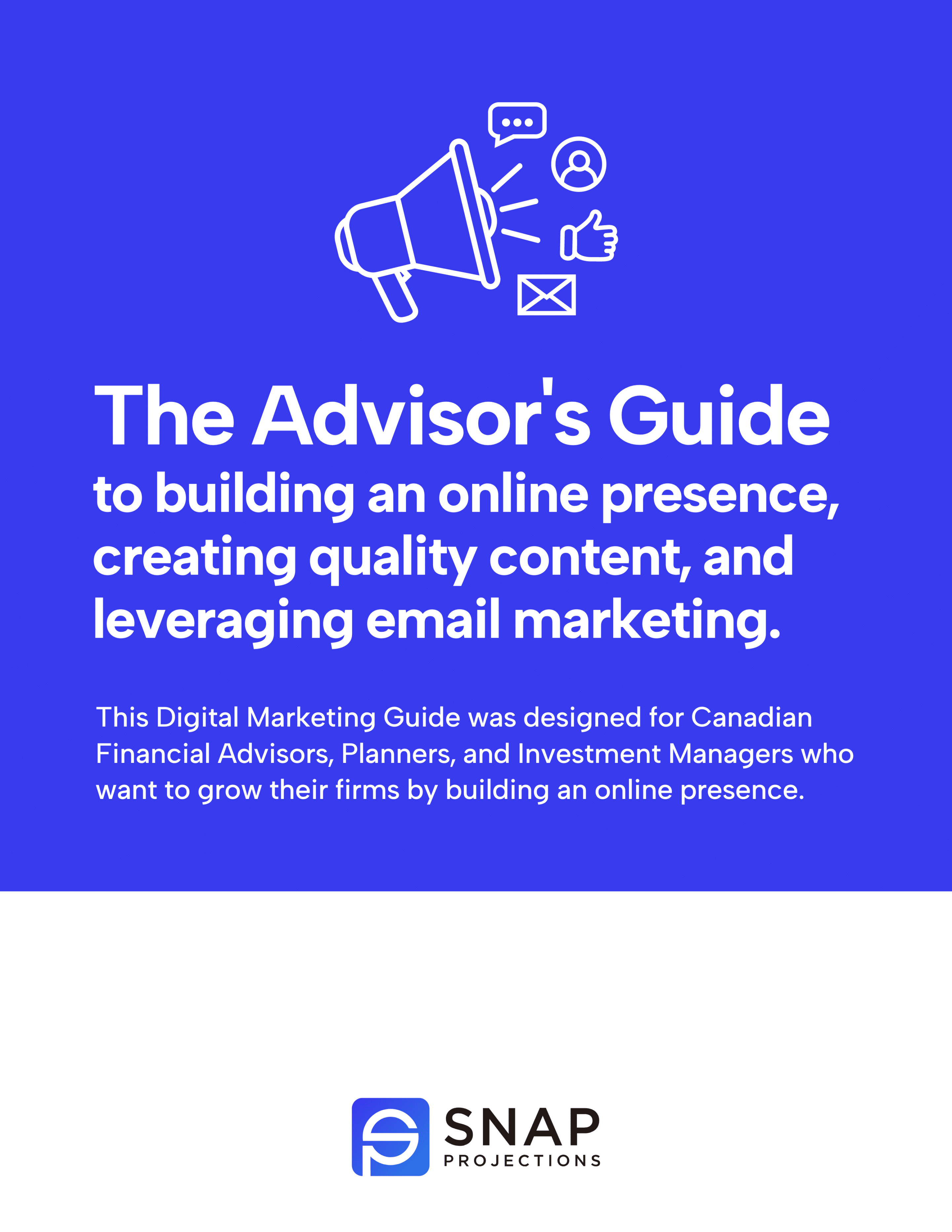When it comes to marketing your Advisory practice, one of the first stages is getting clear on who you want to serve and why, and determining a process to set clear and actionable goals.
In this article, we are going to cover these two fundamental stages of creating a marketing plan for Canadian Financial Advisors, Planners, and Investment Managers.
Target Audience
Identifying your target audience is the first step in creating a successful marketing plan. We will cover how to define your ideal clients and understand their needs and preferences.
How to segment your target audience:
Target audience segmentation involves dividing the larger audience into smaller, more specific groups, known as segments, based on shared characteristics and needs. This approach allows Advisors to tailor their marketing efforts and services to the unique requirements of each segment, making marketing more effective and relevant.
Here are some key aspects to understand about target audience segmentation:
Demographics: This includes age, gender, marital status, income level, occupation, and location. For example, Advisors might target segments like “high-net-worth retirees in Ontario” or “young professionals in British Columbia.”
Psychographics: Understanding the psychological characteristics of your clients is important. This involves looking at their values, attitudes, lifestyle, and personality traits. For instance, an Advisor may target segments such as “ethically conscious investors” or “risk-averse retirees.”
Financial parameters: Advisors need to consider their clients’ financial situations, including net worth, investment goals, risk tolerance, and investment timeline. For example, segments might include “long-term investors seeking growth” or “income-focused investors close to retirement.”
Life stages: The financial needs and goals of individuals change as they move through life stages. Advisors should consider segments like “young professionals starting to invest” or “empty nesters preparing for retirement.”
Education and knowledge level: Some clients may have a deep understanding of financial matters, while others may be more financially literate. Segments might include “experienced investors” or “financial novices.”
Specific needs or goals: Targeting segments with specific financial needs, such as “retirement income drawdown advice” or “planning to purchase first home,” can be highly effective.
Risk profile: Assessing the risk tolerance of clients is essential for creating appropriate investment strategies. Segments can be defined as “conservative investors” or “aggressive investors.”
Communication preferences: Different segments may prefer different communication channels, such as email, phone calls, or in-person meetings. Understanding these preferences helps Advisors tailor their outreach.
You will want to review your existing client list to determine which segments you’re already serving, and also decide which segment you’d like to serve — who are your ideal clients and why? Marketing should be tailored to attracting your ideal clients.
Setting Clear, Actionable Goals
Clearly defined goals are the foundation of any marketing plan. We’ll guide you through the process of setting specific, measurable, achievable, relevant, and time-bound (SMART) goals for your practice.
How to set clear goals:
Setting goals is crucial for the success of any marketing strategy. There are numerous goal-setting strategies out there, but the SMART goals process works very well for Advisors.
Here’s a step-by-step process to help you create SMART marketing goals:
(S) Specific
Clearly define what you want to achieve. For example, rather than a vague goal like “increase client base,” be specific, such as “acquire 20 new high-net-worth clients in the next quarter.”
(M) Measurable
Establish criteria for measuring progress and success. Identify key performance indicators (KPIs) that can be quantified, such as website traffic, lead conversions, or social media engagement. For instance, “Increase website traffic by 30% in the next six months.”
(A) Achievable
Ensure that your goals are realistic and attainable. Consider your resources, budget, and current capabilities. Setting a goal to “double client assets in one month” might not be realistic, but “increase assets under management by 15% in the next year” could be achievable.
(R) Relevant
Align your goals with the overall business objectives and the current market environment. Goals should contribute to the growth and success of the Financial Advisory practice. For example, if your firm is focused on retirement planning, set goals related to expanding services in that area.
(T) Time-Bound
Set a specific timeframe for achieving your goals. This adds a sense of urgency and helps you stay focused. Instead of saying “increase social media followers,” say “increase social media followers by 20% within the next three months.”
Putting it all together, an example of a SMART marketing goal for Financial Advisors could be:
“Acquire 5 new high-net-worth clients in the next quarter by implementing a targeted digital marketing campaign, increasing website traffic by 30%, and converting at least 5% of the leads generated through the campaign. This goal aligns with our overall business objective of expanding our client base and is measurable, achievable, relevant, and time-bound.”
Regularly review and adjust your goals based on performance and changes in the business environment to ensure ongoing success.
This methodology can be applied to setting your marketing goals as well.
You can still set a SMART goal that is more basic if that makes sense for your practice if you’re just getting started. To do this, focus on the smaller steps within your overall strategy that will get you closer to your end goal. You can have small steps (goals) along the way that will move you toward achieving your end goal.
For example, your first goal may be to build a website or collect email addresses to start your email marketing campaign. These goals should still be SMART, even though they are more bite-sized.
This post is a snippet of Chapter 1, The Financial Advisor’s Guide to Marketing.
Snap Projections provides transparent, highly flexible, easy-to-use planning software for Canadian Financial Advisors, Planners, and Investment Managers. Start a 14-day Free Trial today!


